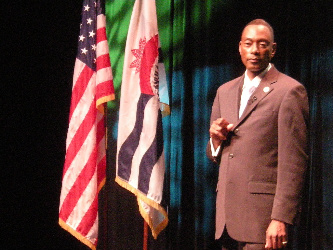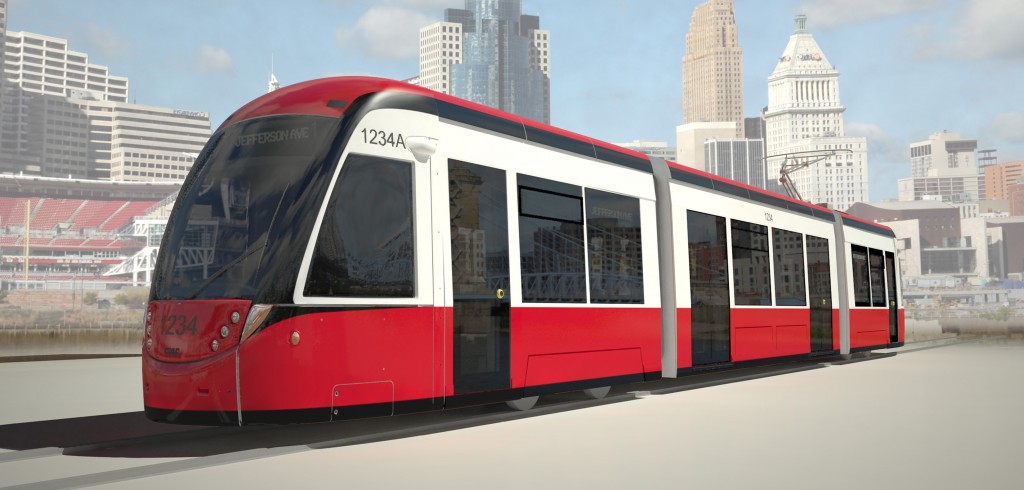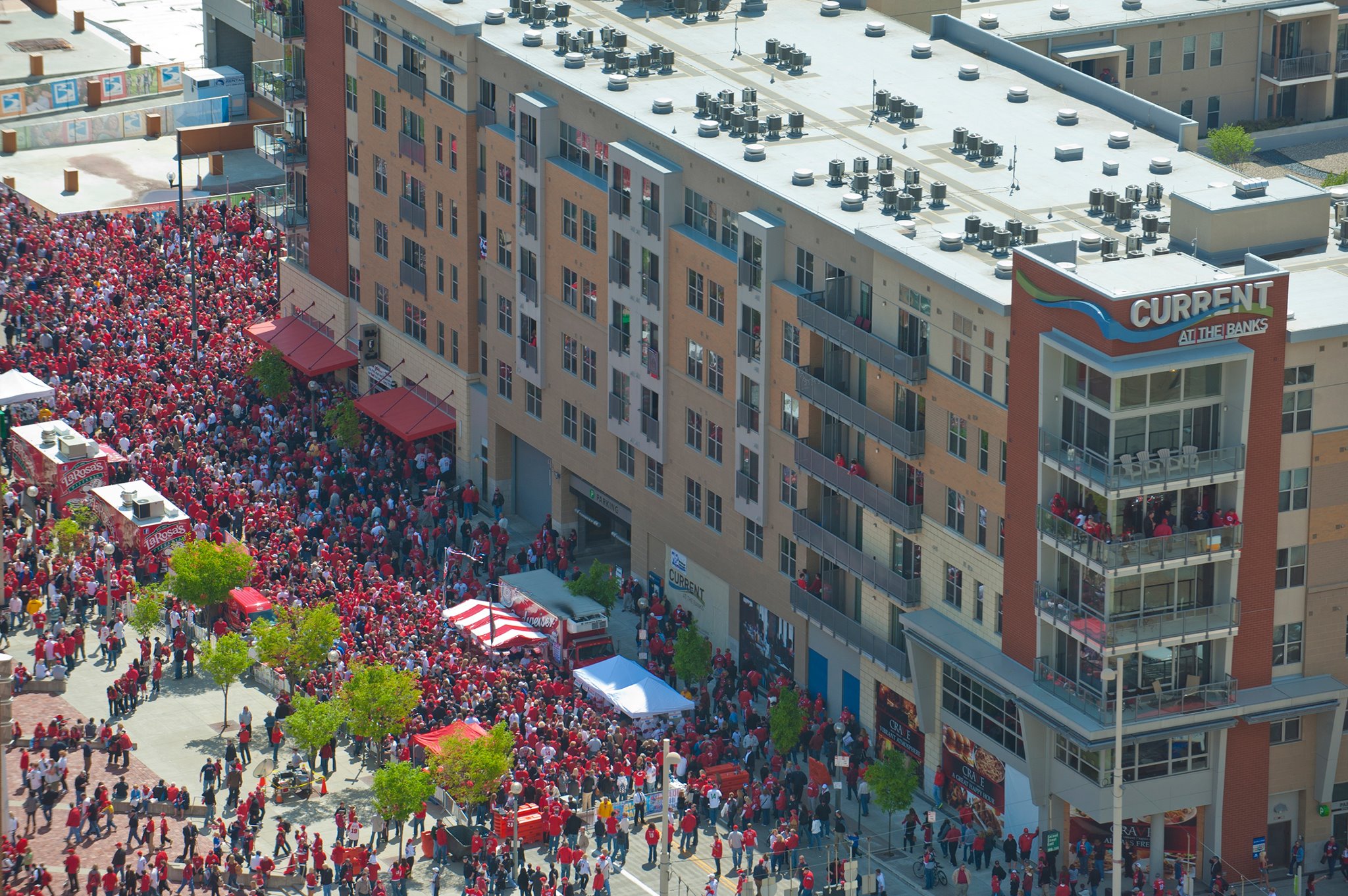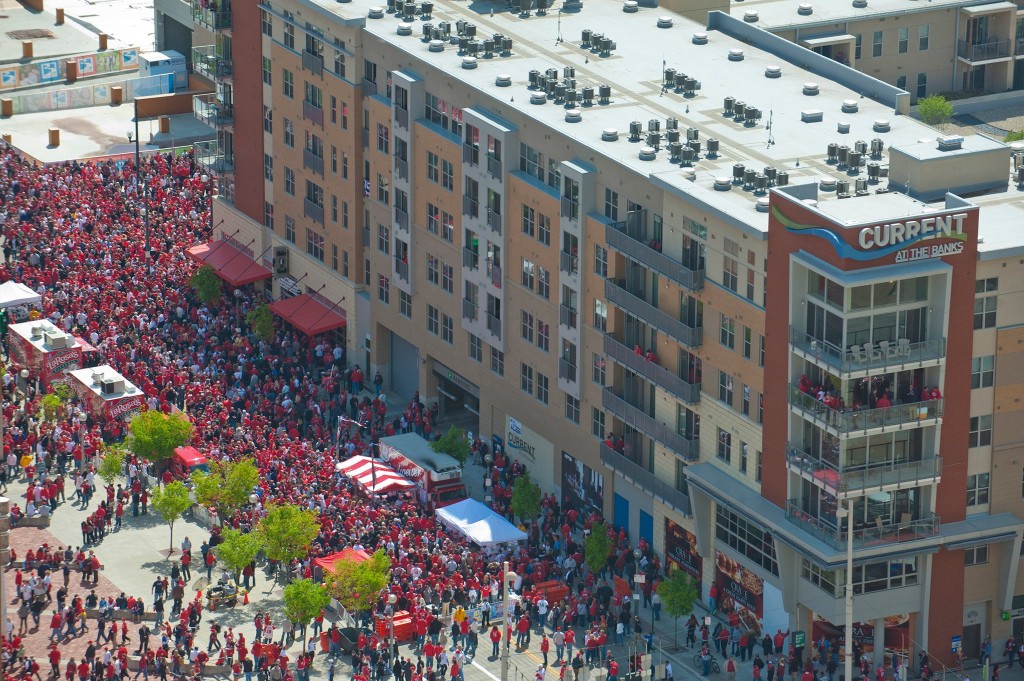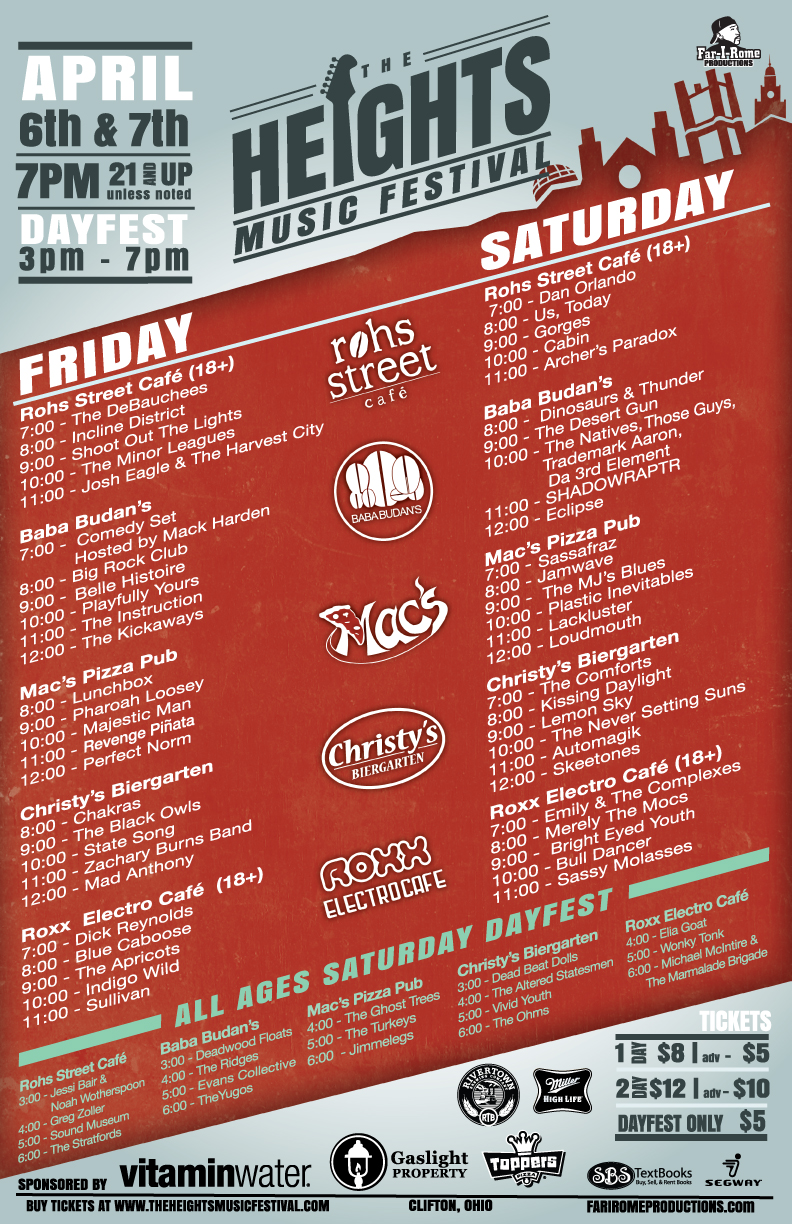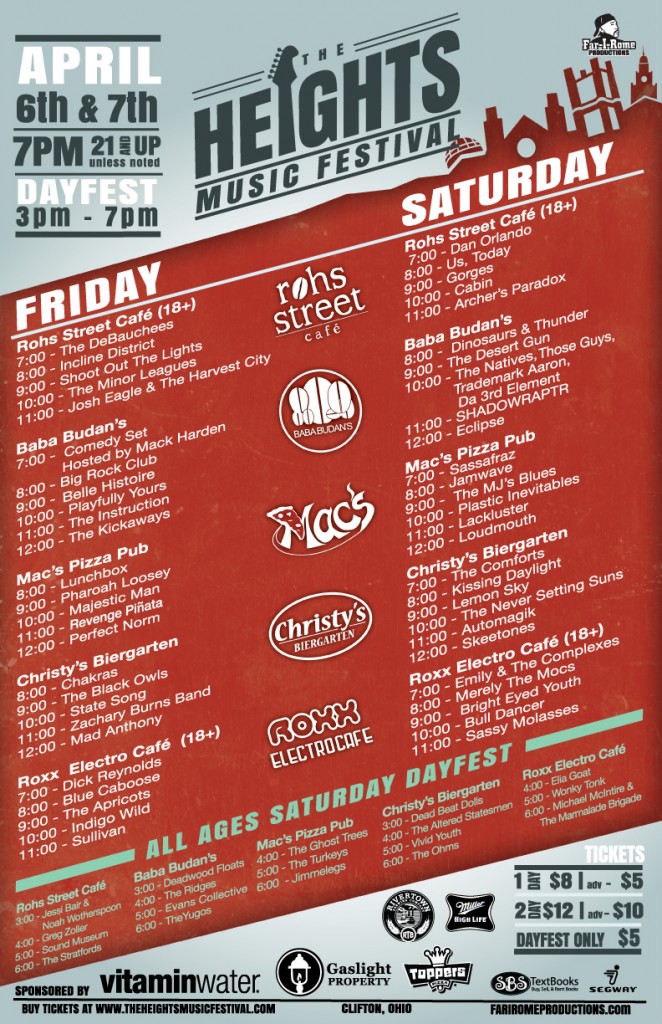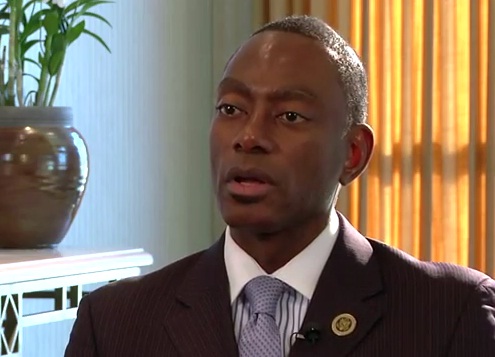Last night Cincinnati Mayor Mark Mallory (D) shared some exciting information regarding the future of rail transportation in the Cincinnati region in his State of the City address. First he announced that Spanish-based Construcciones y Auxiliar de Ferrocarriles (CAF) had been selected to design and construct the first five streetcar vehicles for the Cincinnati Streetcar project currently under construction. Then, he revealed a conceptual vision of what the future of regional rail could look like in Cincinnati.
CAF is a well-respected international manufacturer of streetcars and light rail vehicles, and competed against four other companies who responded to the City’s request for proposals sent out in September 2011. Project officials say that representatives from the City, Metro and other transportation experts based their design selections on a combination of technical specifications, power needs, physical dimension, cost and the ability to travel up the Vine Street hill.
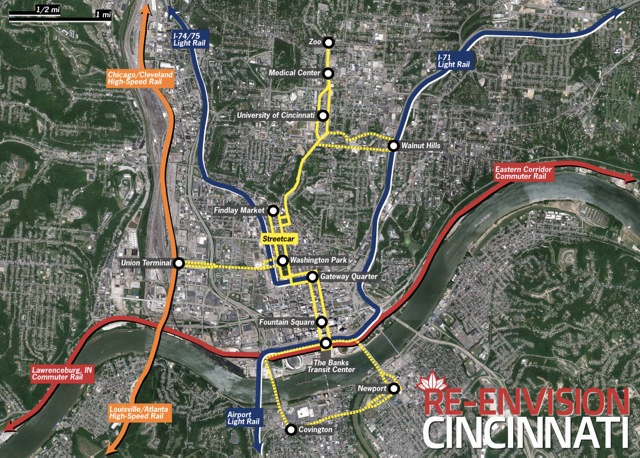
Mayor Mallory touted a new regional rail transit vision for Cincinnati at his seventh State of the City Address.
As city spokesperson Meg Olberding explained, “We wanted to select a company that had both previous experience with streetcars and light rail vehicles as well as was the most cost competitive. We will be the first city in the country to have these streetcars.”
The streetcar team did reportedly consider the use of battery powered streetcars, to avoid any overhead wires, but in the end decided that the electric vehicles save on cost.
One of the most important aspects of the modern streetcar vehicles is their “low floor” feature along the entire length of the streetcar. The low floor is the section of the streetcar that is most level with the curb of the streetcar station, and thus provides significant benefits for handicap accessibility, bicyclists, and people with strollers. Whereas other streetcars have only a small section that is low floor, the CAF streetcars are 100 percent low floor, meaning even greater access for people with wheeled transportation.
Project officials say that the next steps are ensuring manufacturing of the vehicles is done in the United States, and meets ‘Buy America’ standards with at least 60 percent of the materials sourced from the U.S. as well. Officials believe that the first standard has already been met since the vehicles will be built at CAF USA’s Elmira, NY facility.

CAF USA’s modern streetcar design for Cincinnati will be the first of its kind in the United States.
Two basic paint schemes have been distributed for illustrative purposes, and city officials note that no final paint schemes have been determined.
While the mayor touted a vision for rail transit in Cincinnati during his seventh State of the City address, he also noted that the City has been actively pursuing funding for the next phase of the streetcar route to extend uptown. This includes a $1.2 million grant application under the Federal Transit Administration’s New Starts program. Should the City receive those funds, officials say work will begin on studying the appropriate alternatives for an uptown circulator route to be built after the Uptown Connector route is constructed along Vine Street.
As for light rail and commuter rail, the Mayor’s plan is looking even further down the road.
“It’s a vision of the future,” Olberding stated. “Growing our transportation options [beyond the streetcar] is a regional conversation we are willing to have.”

